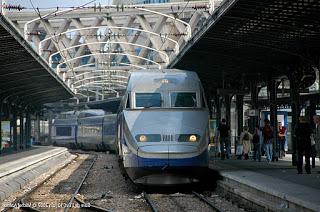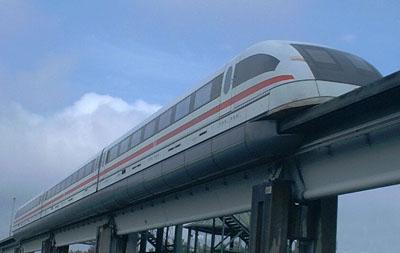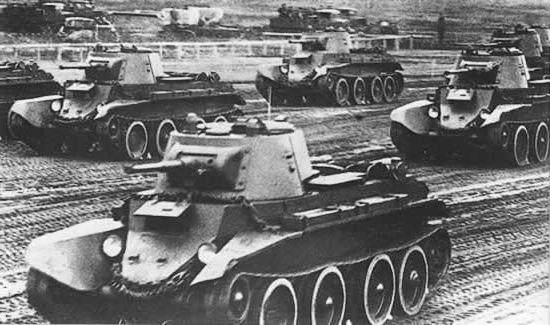What is the fastest train in the world? Technology reaching speeds of 500 km / h
Travel by rail almost immediatelyafter the invention of the locomotive was the fastest way to overcome distances, and this position lasted more than a century. Only in the XX century, which became the era of development of the automotive and aviation industry, this primacy began to be challenged. But engineering thought does not stand still, and modern express trains, in the design of which many aerospace technologies are used, today can compete with swiftness with other modes of transport.

Race on trains
The technical rivalry of countries is expressedin different ways, including in an effort to create the fastest train in the world. Leadership in this race for the last decades is shared by Japan, France and Germany, but the rapid development of industrial and scientific base in the countries of the Asian region suggests that China and South Korea will soon challenge traditional producers. In addition to economic expediency, the answer to the question of which train is the fastest determines the foreign trade and even political prestige of the state, just as in the middle of the 20th century the world leaders were concerned about space priority. The similarity is reinforced by the technological saturation of the latest railway projects.

Technical problems and solutions
The speed of any land vehicleis limited to high levels of friction, air resistance and safety factors. All three of these circumstances are fundamentally insurmountable hindrances, but this does not mean that the degree of their impact can not be reduced. Accumulated aeronautical experience in the creation of aerodynamic forms, monorail and magnetic-levitation technology - these are the main ways by which the creators of modern railways went. High-speed trains are created for their operation on an ordinary railroad track or other specially constructed overpasses. A scientific breakthrough in the field of physics of magnetism created the conditions for the application of the newest technologies, allowing literally to fly over the rails.

New Japanese track
Before the Tokyo Olympics in 1964 was createdThe world's fastest train to deliver guests to sports venues. Its name "Shinkansen" is translated from Japanese as "new gauge", the size of which was made according to the mainland standard. The speed was impressive, at that moment it was fantastic. On some sections the train developed 270 km / h, allowing to reach Osaka in three hours. The project was quite expensive, but paid off in three years. The main difficulty was to create a high-precision railroad track, but there were other technical problems that received original solutions.
Competition of the Japanese and the French
Record speed in the early seventies beatenFrench people. The TGV train moves at a speed of over 330 km / h, which is currently considered the norm for this type of transport. But it turned out that the Japanese project "Shinkansen" has the most important technical characteristics of any technical system, namely, the modification potential. The possibility of improving it allowed us to retain the primacy. The absolute world record is 581 km / h, this factor causes another, unofficial name Shinkansen, "bullet". To date, almost half a century after the commencement of traffic on the Osaka-Tokyo line, this is the fastest train in the world.

What did the French succeed?
Despite the considerable age (he was put inoperation in 1971), the French "Grand Vitesse" TGV firmly holds the second place. But, like athletes, railroad trainers perform in different nominations. In 2007, this miracle of technology accelerated to a record speed of almost 575 km / h. This value is inferior to the achievement of the Japanese colleague, but the fact is that the magnetic suspensions in the design of the TGV POS model were not applied. Thus, this French express is the fastest train in the world, moving along ordinary rails. There is one more feature of this unique vehicle: its length is almost 400 meters. It is the largest train in the world in terms of spaciousness among expressways.

Chinese "German"
Passengers flying to Shanghaiairport, can reach the city in minutes. Directly in the terminal is the terminal stop of the Maglev train. Having descended from the gangway and followed the huge building of the terminal, the arrivals come into the car, their interior is no different from the transcontinental jet liner: the same aircraft seats, and even pretty flight attendants. The distance to the nearest metro station is more than 30 kilometers, this train overcomes it in about seven minutes. On the scoreboard installed above the entrance doors, you can track the developed speed, it exceeds after overclocking 500 km / h in the daytime. At night, the express moves somewhat slower (430 km / h), this is due to security considerations. As the name implies, the friction force was overcome by magnetic levitation. It should be noted that, despite its Chinese "residence permit," the Shanghai Maglev Train has German roots. It was created in Germany by specialists of Transrapid, which developed other high-speed trains in the world. The SMT model, which became the foundation of the Shanghai "Maglev", was finalized in accordance with the wishes of the customer. The cost of traveling in this miracle of technology is quite democratic - 40 yuan, which corresponds to about five US dollars.

And what about us?
Russian successes in high-speed railthe message is still modest. 250 km / h, which develops "Peregrine Falcon," until recently seemed a fantastic result, but against the backdrop of the achievements of the leading manufacturers, it is no longer impressive. In addition, despite the Russian name, it is of foreign origin, made in Germany by the world famous company Siemens. The ten leaders, this express, plying between St. Petersburg and Moscow, is not included. It is not known whether in the near future Russian designers will try to create the world's fastest train. The cost of developing the rolling stock itself is great, but the accompanying infrastructure will cost much more. However, Russia still remains a great railway power, both in terms of the total length of the routes, and in terms of the volumes of cargo being transported, and in terms of passenger traffic. So time will tell.
</ p>>







